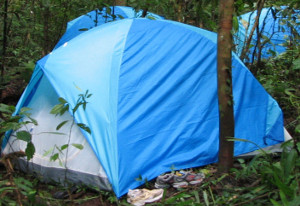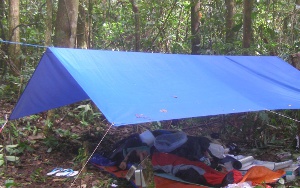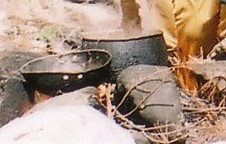There is wide range of stoves that are designed for use cooking outdoors. Although each brand boosts its unique advantages, the general classes of stove are liquid fuel stove and gas cartridge stove. Also included in this article is the alcohol and solid fuel stove although the stove is normally just a container for the fuel which is burnt directly under the pot to provide heat. Whether to invest a particular class or brand of stoves over another is dependent on purpose and personal preference.
Liquid fuel stove
Liquid fuel stove are excellent for treks over many days (more than one week), where fuel availability is a concern and for low, freezing temperature cooking. However, a typical trek in Peninsular Malaysia seldom lasts more than five days. While liquid fuel stove does have its benefits, they are generally not required for a trek in Peninsular Malaysia. They are probably the most expensive stoves amongst those commonly used for treks and expeditions. The best fuel to use for liquid fuel stove is white gas although they can take on any other fuel such as kerosene and petrol. Apart from white gas, other source of fuel may be dirty and cleaning after a long outfield trip is recommended to prevent clogging due to build up of contaminants. Unfortunately, white gas may be difficult to find in South East Asia and they can be expensive. Unless you intend to go for regular expeditions lasting more than a week or where temperature is expected to go below freezing, it is better to stick to gas cartridge stove.
Gas cartridge stove
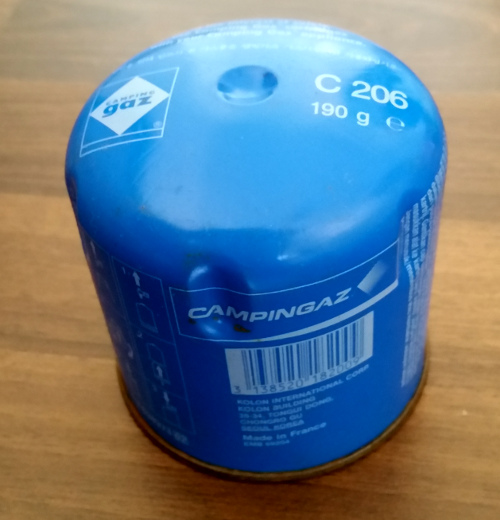
|
This is by far the most popular stove for a typical trek in Peninsular Malaysia. The cartridges are light compared to liquid fuel stove and very little maintenance is required for the stove head. A single puncture-type 190g gas cartridge can usually last about 3 days. They are also commonly sold in Singapore and Malaysia and are relatively cheap.
The two main type of gas cartridge stoves used in this region is the puncture type and the valve type. The puncture type is the oldest and cheaper of the two. Price aside, the valve type is recommended as it is safer than the puncture type. This is because gas will leak out during cartridge replacement either when taking out the expended cartridge or inserting a full cartridge. This runs the risk of catching fire if there is naked flame nearby. It is also not safe to store a punctured gas cartridge with the stove head attached as there may be a risk of gas leakage. A valve cartridge with its build in valve will minimize leakage during cartridge replacement and can be stored safely for the next trip. More information on gas stoves may be found on The Australian Bushwalking FAQ - Gas Stoves1.
Alcohol Stove
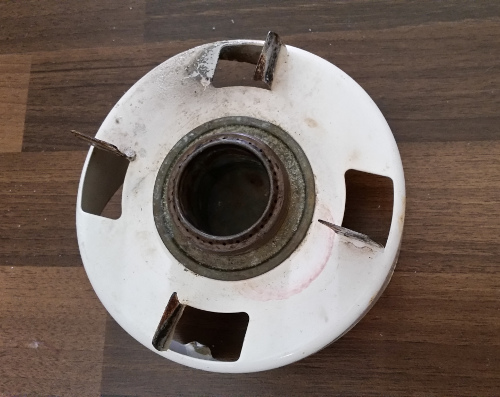
|
Other than the solid fuel stove, this is probably the simplest type of stove you can use on a trek. The general construction is a container to hold denatured alcohol (methylated spirit) which you set on fire for cooking. The main advantage is that it is almost impossible to fail and there is literally no maintenance required other than washing the "container" for holding the fuel. It does not clog and even if it drops into the river, just pick it up, wipe it dry and use it. Unlike solid fuel, the flame from burning alcohol is clean and does not leave any residues on your pot. Denatured alcohol is also relatively cheap and easy to find. It is a solvent commonly sold in paint shop or hardware shop.
Despite its advantages, there are some important disadvantages to be aware of. The heat output is much less for alcohol compared to gas, thus cooking and boiling will take twice as long as gas2. Given the hot climate in this tropical region, there will be significant wastage from evaporation during transferring of alcohol from its bottle to the stove container. There is usually no option to control the fire output and any remaining alcohol is usually left to burn out after using. Unlike gas cartridge stove, there is no simple way of extinguishing the fire and relit the remaining fuel for later use. Nevertheless it is a good as a second stove to be brought for a trek due to its reliability.
Solid fuel stove
Solid fuel and its stove are usually brought along as emergency equipment rather than for actual cooking. The stove is just a holder for the solid fuel which you burn to provide the heat. An advantage of solid fuel is that there is no danger of leakage. The only way to catch fire is to burn it with a naked flame for a few seconds. This is seldom used for actual cooking as the heat generated is low and expensive in terms of energy output per dollar. The fire also leaves behind sticky brown residue on the base of the pot which can be washed away.
References
